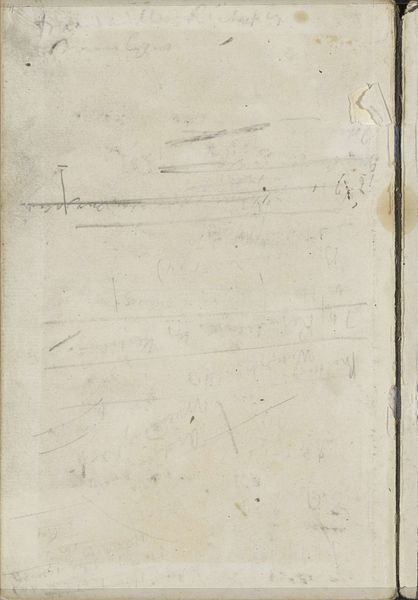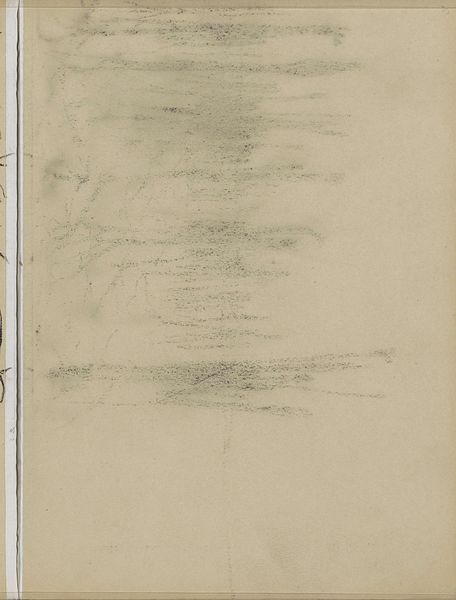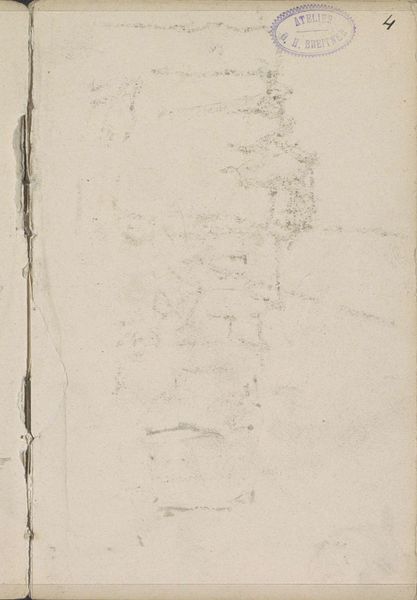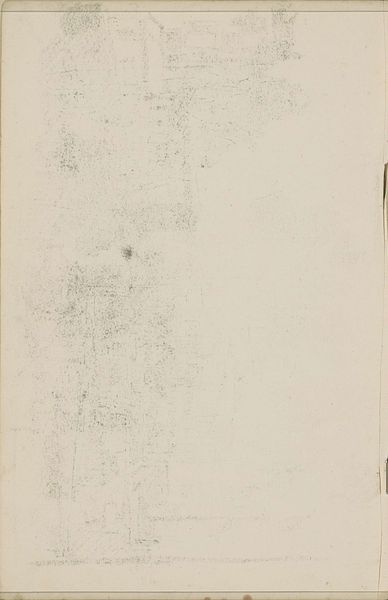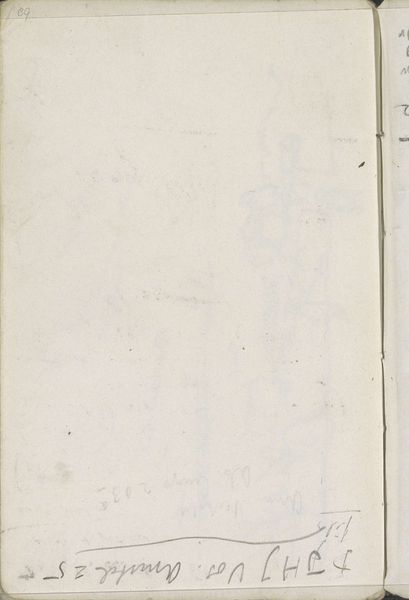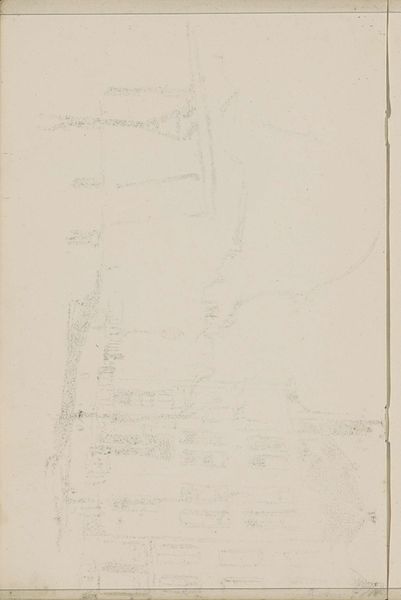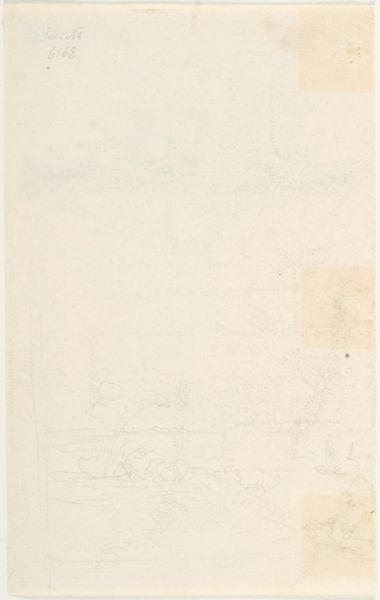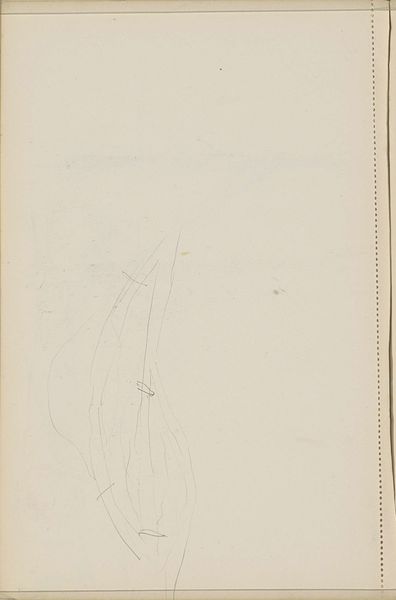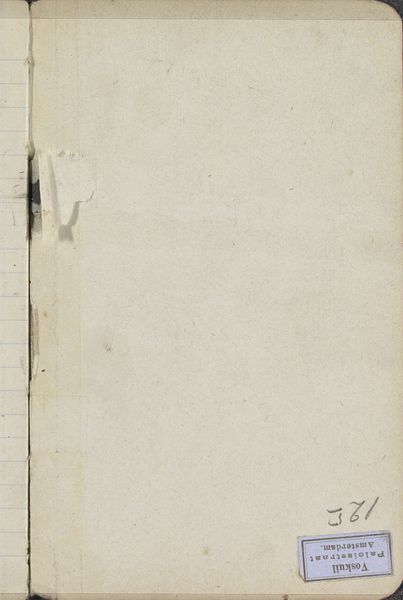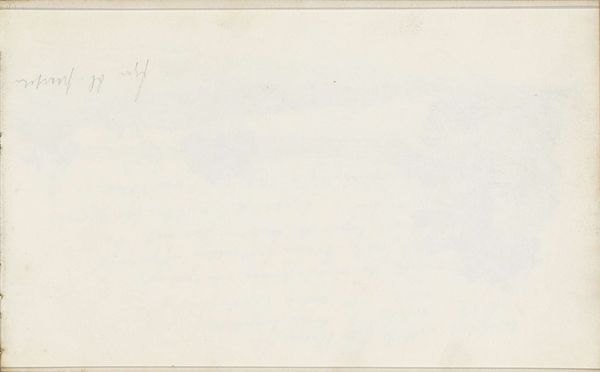
Copyright: Rijks Museum: Open Domain
Curator: Welcome. Today, we're observing Cornelis Vreedenburgh’s “Studie,” created sometime between 1890 and 1946. It's currently held at the Rijksmuseum. The piece employs pencil and watercolor on paper. Editor: At first glance, it seems extraordinarily faded, almost ethereal. It gives me the impression of something worn down or perhaps unfinished. You can barely see the traces of landscape suggested there. Curator: The elusiveness is fascinating. Despite the ambiguity, the horizontal strokes seem to hint at a landscape. It is reminiscent of the Impressionist exploration of light and atmosphere, almost a memory of a landscape, a faded dream. The restraint here becomes meaningful; what does choosing to barely represent a landscape express? Editor: Well, I see that paper is at play, here. Note the slight show-through and bleed. Those hints of color, accidental as they may seem, disrupt the perceived refinement expected of 'fine art'. Were the materials intentionally distressed, I wonder? Curator: It does seem as though the process itself, the interaction of water and paper, guides the composition. The image verges on abstraction but remains suggestive. It draws our attention not only to what’s present, but what is intentionally absent – the ghost of what the landscape means as an idea. Editor: The limitations that paper introduces for painting intrigue me. I see it as an economical and immediate form of artistic production; available material in most locations at almost all times. To me, the piece prompts questions about value and labour - who makes art, what kinds of art are valued? Curator: Precisely! These subtle, almost ghostly depictions were quite evocative during the early 20th century as symbols of transience and the ephemeral nature of memory. One is forced to meditate upon nature's cycles, its decay, its persistence nonetheless, within the constraints that shaped Vreedenburgh’s art. Editor: Thinking about it now, there’s something very accessible about watercolor on paper. It bridges high art and the everyday materiality of sketching or notation, a kind of egalitarian distribution of making itself. I find it surprisingly powerful for that reason. Curator: An apt thought. It seems Vreedenburgh intended to encourage deeper contemplation through material limits, the fading world, and perhaps our limited perspective, even memory of the world. Editor: Yes, a reflection both on the artist's method and of the nature of our remembering.
Comments
No comments
Be the first to comment and join the conversation on the ultimate creative platform.
